How the ‘royal disease’ destroyed the life of Russia’s last tsarevich
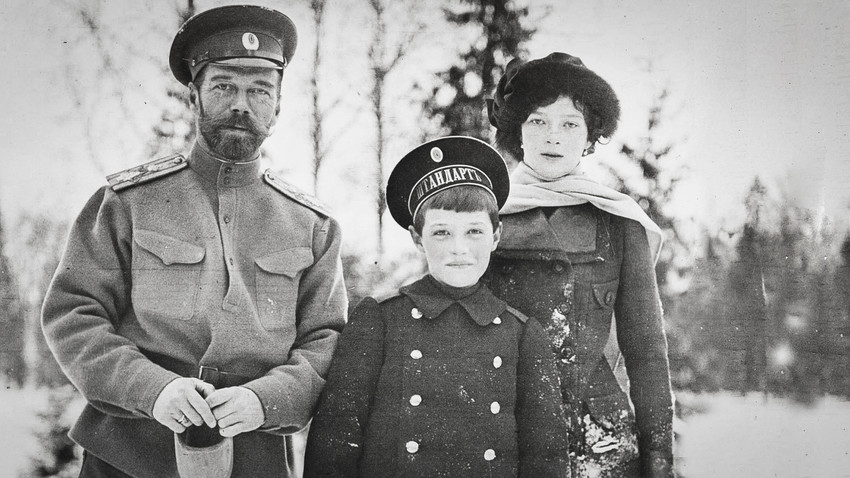
Tsarevich Alexei with his father and sister.
Public domainWhen Alexandra Feodorovna, Nicholas II’s wife and the Empress of Russia, gave birth to a son (on July 30, 1904), it was met with much joy and celebration. Finally, after giving birth to four girls, between 1895 – 1901, Nicholas and Alexandra had a son Alexei, who became heir to the throne.
“There are no words enough to thank the Lord for this relief he sent us in these hard times!” Nicholas II wrote joyfully in his diary. Little did he know that the boy would have a very difficult life and meet a grim fate.
Illness
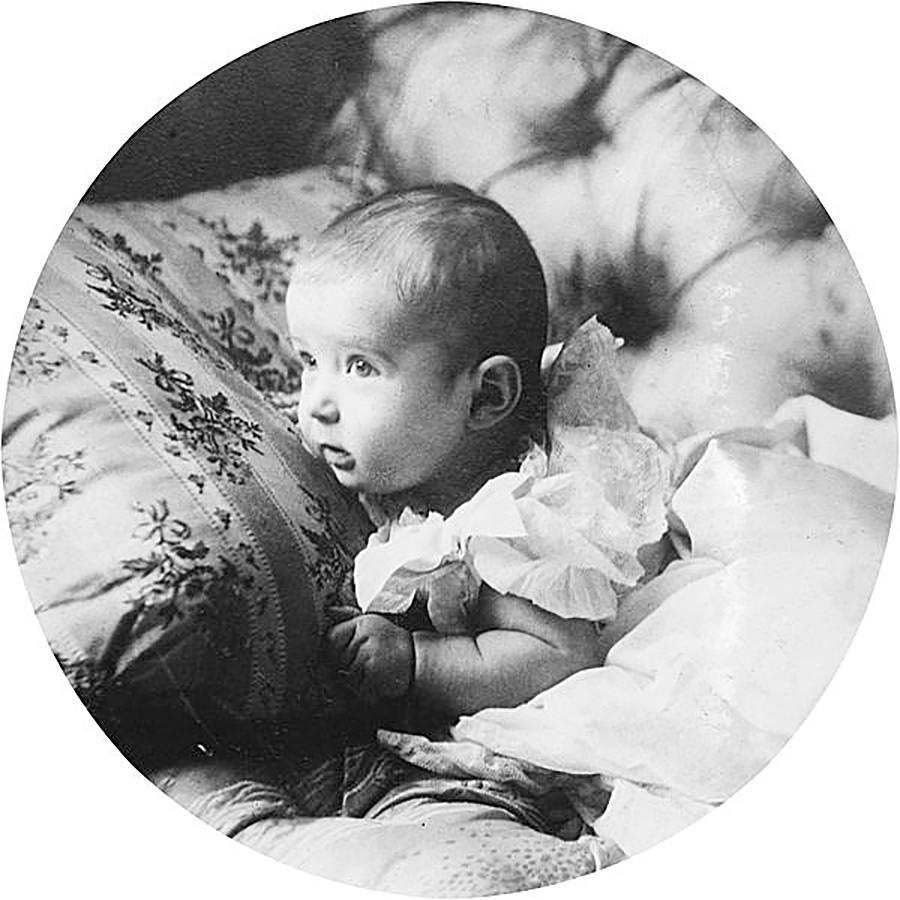
Alexei Nikolaevich in his baby age (in 1904).
Public domain“It was too early to cheer and thank God,” historian and medic Boris Nakhapetov wrote in his book, Medical Secrets of the House Romanov. “Soon, the doctors found out that the child suffers from the horrendous illness of the Empress’ family – hemophilia.”
This congenital disease is marked by slow blood coagulation, and so the smallest bruise often becomes prolonged internal bleeding. Women “carry” the gene of hemophilia, but men suffer from it. Alexandra inherited the gene from her grandmother, Great Britain’s Queen Victoria.
Alexei’s symptoms first appeared when he was just several months old, and it plagued him his entire life. Anna Vyrubova, the Empress’ maid of honor, recalled the times when the sickness worsened: “It was endless torture for the boy and for each of us… he was screaming from the pain all the time, and we had to close our ears while taking care of him.”
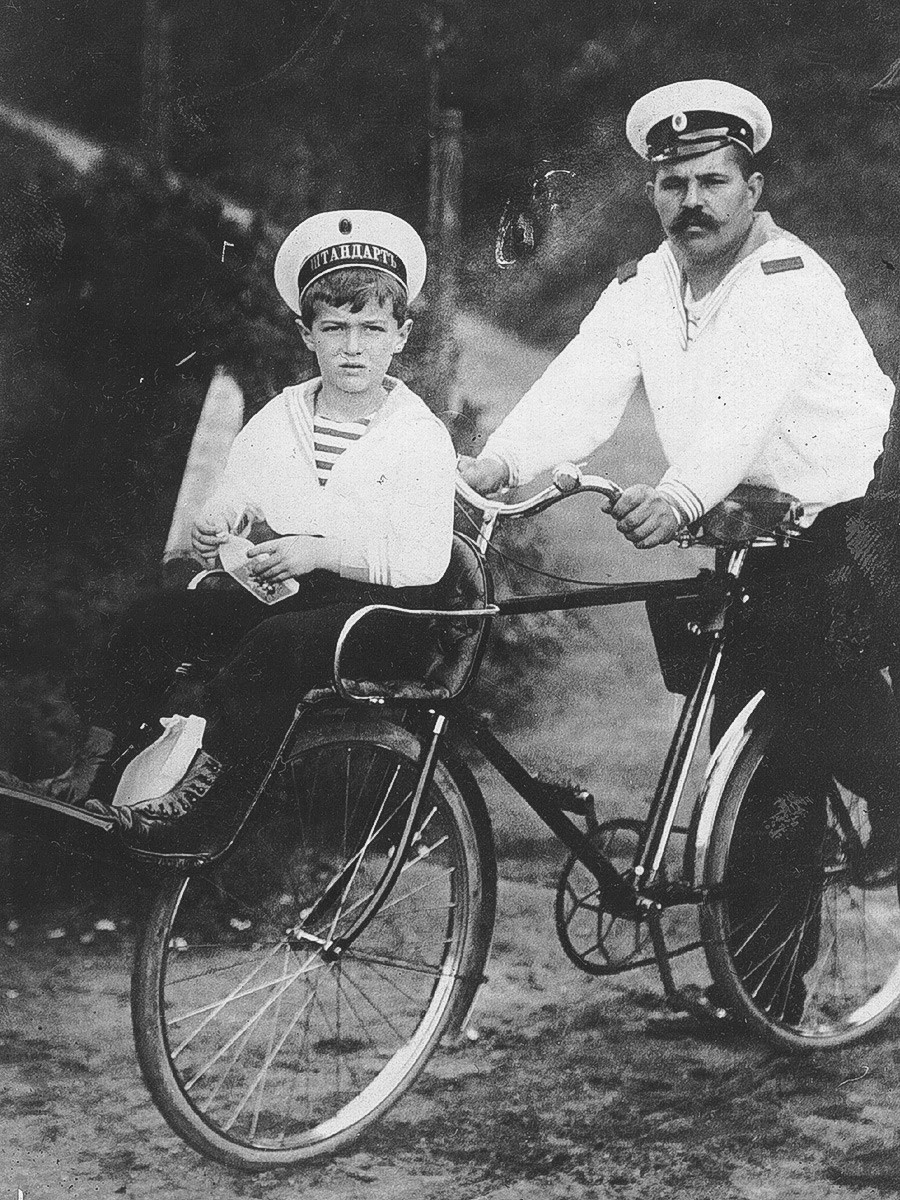
Sometimes Alexei couldn't even walk. That's him and his 'sailor nanny' on a bicycle in Friedberg, Hesse, 1910.
Public domainThe most excruciating moments for the boy were when blood seeped into his joints. “Blood destroyed bones and tendons; he couldn’t bend or unbend his arms or legs,” said Nakhapetov.
The only way to remedy the situation was through massage and exercise, but this was also fraught with the danger of more injuries and bleeding. So, from time to time, Alexei couldn’t walk at all, and servants had to carry him to official events.
'Holy' helper
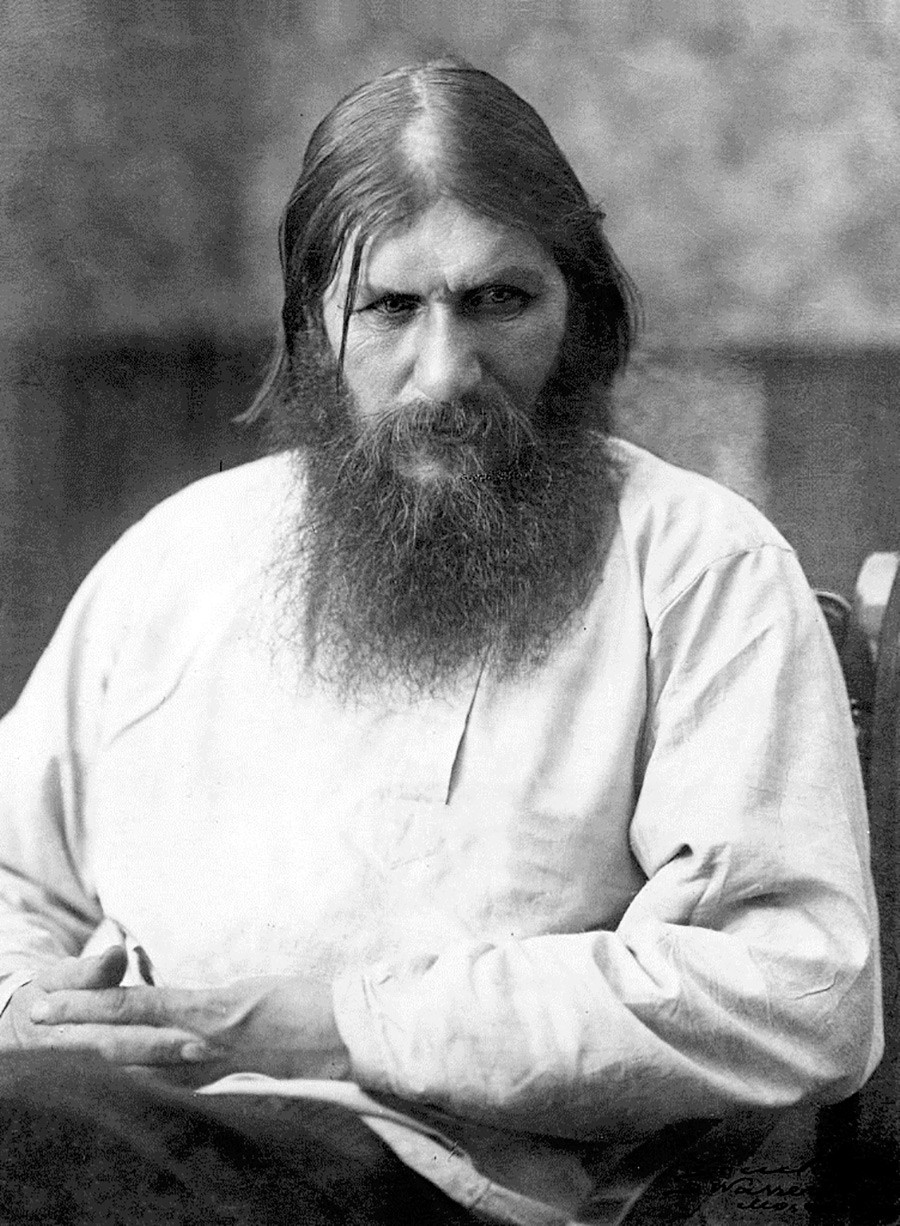
Grigory Rasputin.
Public domain“There are many mentions that Rasputin repeatedly made the heir feel better,” Nakhapetov admits. “But there is no strong, documented data.” Nakhapetov thinks that Rasputin used hypnosis to calm Alexei, which improved his condition. One thing is clear – Alexandra and Nicholas II believed in Rasputin, and so he gained unbelievable political influence.
“The
Russia’s little prince
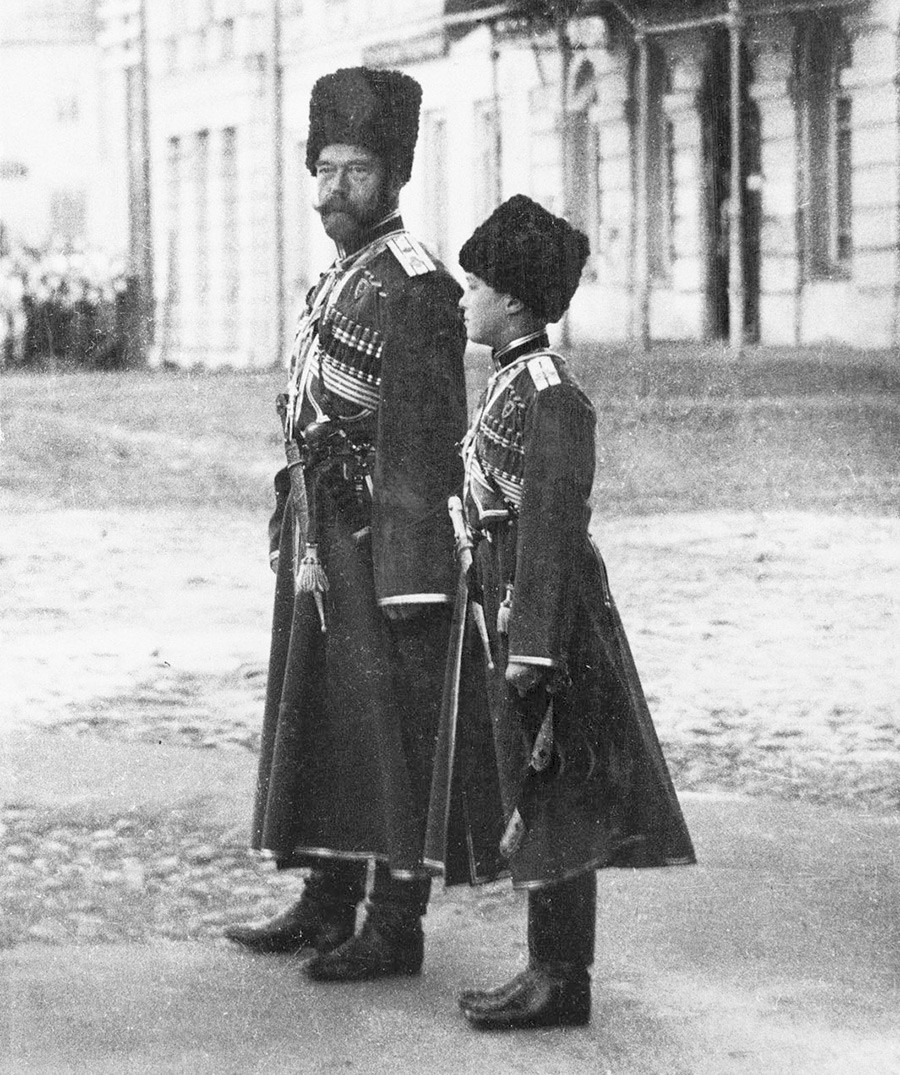
Nicholas II and Alexei in the Cossack uniforms at the military parade, 1916.
Public domainAt the same time, people who met him remembered the tsarevich as a kind person. “He was quick at bonding with people, loved them and tried to do all he could for them,” Anatoly Mordvinov, Nicholas II’s adjutant, wrote
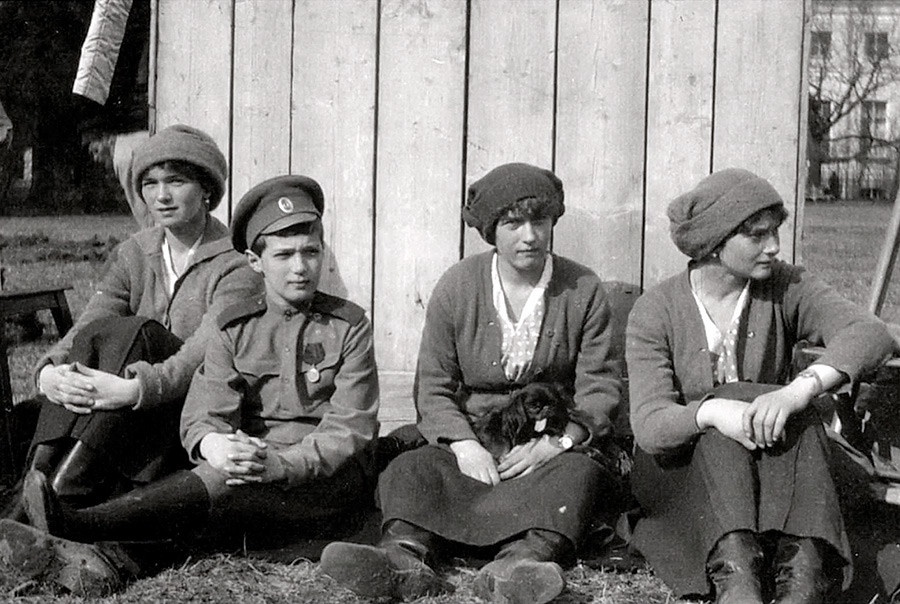
Alexei and three of his sisters in the ex-royal residence, May 1917.
Public domainAlexei had great relations with both of his parents and four sisters, and among his closest friends was Andrey Derevenko, his personal servant
Tragic end
The
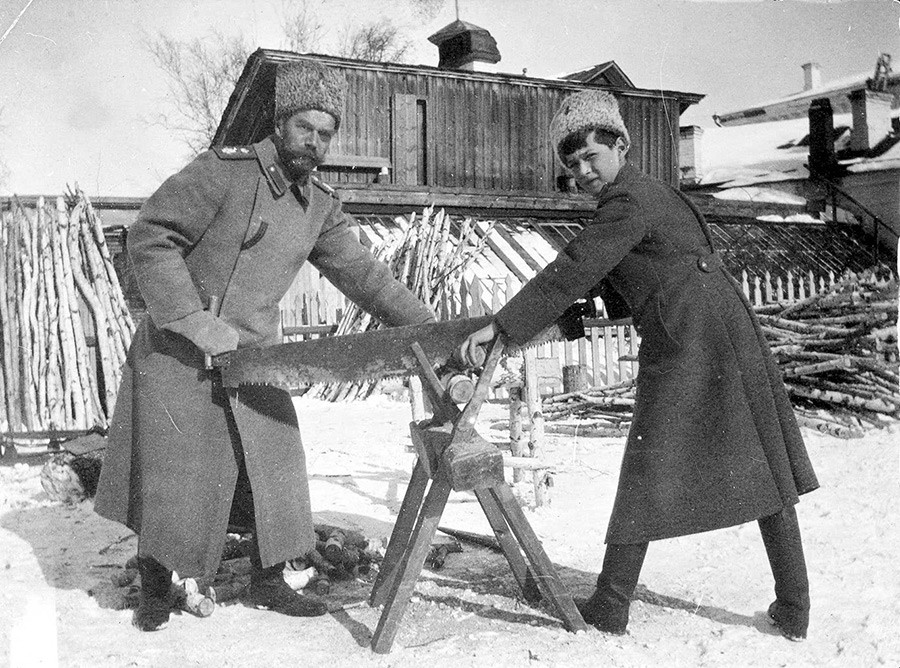
Tsarevich Alexei Nikolaevich and Tsar Nicholas II sawing wood at Tobolsk in 1917 (just months before their death).
Romanov Collection, Beinecke Rare Book and Manuscript Library, Yale University“All of a sudden, Alexei couldn’t walk again,” Tatiana Botkina, a medic who helped the Romanovs in Tobolsk (2,300 km east of Moscow), wrote in her memoirs. “He suffered so much from internal bleeding…” After suffering another bruise, Alexei struggled with his disease and had no time to recover. On the night of July 17, when the local Bolsheviks ordered the Romanovs to go down to the basement, Nicholas carried his son. As you know,they never saw the light of day again.
We also have an article on how the royal family of Nicholas II spent its last days before the execution – and you can read it right now.
If using any of Russia Beyond's content, partly or in full, always provide an active hyperlink to the original material.
Subscribe
to our newsletter!
Get the week's best stories straight to your inbox